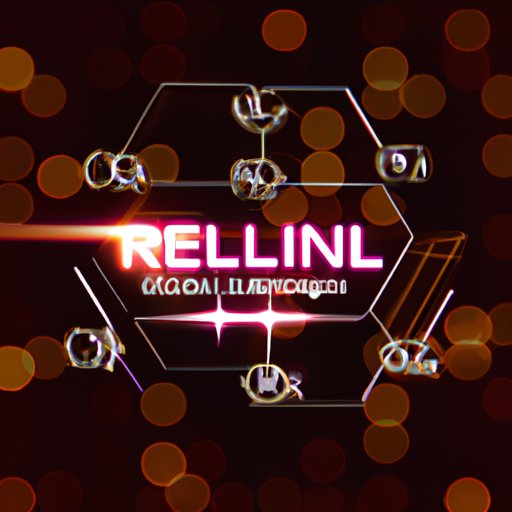Introduction
Retinol is one of the most popular skincare ingredients on the market today, and for good reason. It’s a form of vitamin A that has been proven to have a variety of benefits for the skin, from reducing fine lines and wrinkles to brightening skin tone. But what is retinol, exactly, and how does it work? In this article, we’ll explore the science behind retinol and its effects on the skin, as well as provide a comprehensive guide to understanding how to use it properly and safely.
Exploring the Science Behind Retinol: How Does It Work?
In order to understand how retinol works, it’s important to first understand the role of retinoid receptors in skin health. Retinoid receptors are proteins found in the skin that bind to molecules like retinoic acid (a derivative of vitamin A) and convert them into retinol. This process helps to regulate cell growth and differentiation, which is essential for healthy skin.
Retinol also plays an important role in stimulating the production of collagen and elastin, two proteins that are essential for maintaining firm, youthful-looking skin. Collagen helps to keep skin looking plump and smooth, while elastin ensures that skin stays elastic and supple. By stimulating the production of these proteins, retinol can help to reduce the appearance of fine lines and wrinkles.
The role of vitamin A in skin health cannot be overstated. Vitamin A is an essential nutrient that helps to promote healthy skin cell turnover, as well as protect against sun damage. Research has shown that vitamin A can reduce inflammation and oxidative stress, both of which can cause premature aging of the skin.

A Comprehensive Guide to Understanding Retinol and Its Benefits
When it comes to using retinol, there are a few things you should know. First, there are different types of retinol products available, including creams, serums, and even oils. Each type of product offers its own set of benefits and should be used accordingly.
When using retinol, it’s important to follow the usage guidelines provided by the manufacturer. Generally speaking, retinol should be applied in small amounts and only at night, as it can make skin more sensitive to the sun. Additionally, it’s important to start out slowly with retinol, as it can take some time for the skin to adjust to its effects.
It’s also important to note that retinol can have some potential side effects, including dryness, redness, and irritation. If you experience any of these symptoms, it’s important to stop using the product and speak to a dermatologist if necessary.
Retinol 101: What You Need to Know About Its Functionality
Now that we’ve explored the basics of retinol, let’s take a closer look at how it works to benefit the skin. One of the primary benefits of retinol is its ability to reduce the appearance of fine lines and wrinkles. This is due to its effects on collagen and elastin production, which help to keep skin looking firm and youthful. Retinol also helps to increase cellular turnover, which can help to reduce the appearance of scars and other blemishes.
Retinol can also help to reduce acne breakouts. This is due to its ability to reduce sebum production, as well as its anti-inflammatory properties. Additionally, retinol can help to brighten skin tone by reducing hyperpigmentation caused by sun damage or scarring.
Finally, retinol can also help to protect the skin from the sun. This is due to its antioxidant properties, which help to neutralize free radicals that can cause damage to the skin.

How Retinol Works to Give You a Glowing Complexion
Retinol is often referred to as an “anti-aging” ingredient, and this is due to its ability to increase cellular regeneration. As skin cells are regenerated, they are replaced with healthier, younger-looking cells. This helps to reduce the appearance of wrinkles and other signs of aging.
Retinol also helps to stimulate collagen production, which can help to keep skin looking firm and plump. Additionally, retinol helps to keep skin hydrated by increasing the production of hyaluronic acid, which helps to lock moisture into the skin. Finally, retinol can help to improve skin elasticity by stimulating the production of elastin.

An Overview of Retinol and Its Effects on the Skin
Retinol is an incredibly powerful ingredient that can offer a variety of benefits for the skin. Not only can it reduce the appearance of fine lines and wrinkles, but it can also help to reduce acne breakouts and brighten skin tone. Additionally, retinol can help to protect the skin from sun damage and reduce hyperpigmentation. Finally, retinol can help to keep skin looking hydrated and plump by stimulating collagen and elastin production.
Conclusion
Retinol is a powerful ingredient that can offer a variety of benefits for the skin. From reducing fine lines and wrinkles to brightening skin tone and protecting against sun damage, it’s no wonder why retinol is one of the most popular skincare ingredients on the market today. By understanding how retinol works and following the proper usage guidelines, you can reap all of the amazing benefits that this ingredient has to offer.
(Note: Is this article not meeting your expectations? Do you have knowledge or insights to share? Unlock new opportunities and expand your reach by joining our authors team. Click Registration to join us and share your expertise with our readers.)
